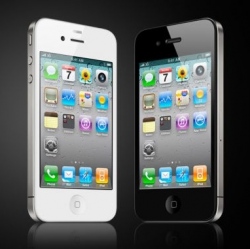
We already know that smartphones can perform many of the same features as more expensive computers, cameras and other devices. Now, a portable iPhone cradle made up of about US$200 worth of electronics is claimed to be as accurate of a biosensor as a $50,000 spectrophotometer that remains stuck in a lab.
The device was developed at the University of Illinois at Urbana-Champaign, by a team led by Prof. Brian Cunningham. When an iPhone is placed in the wedge-shaped cradle, its camera is aligned with the cradle’s own lenses and filters. Running an accompanying custom app, the phone is then able to detect toxins, proteins, bacteria, viruses and other molecules.
Users start by putting a sample on a microscope slide, then inserting that slide into the cradle. The slide has previously been coated with a photonic crystal which allows most light to pass through, but reflects one particular wavelength. Molecules of any biological substance present within the sample will stick to the crystal, and shift the wavelength of that reflected light. The slide is “primed” for each project, in order to react to a specific target substance.
By measuring the extent to which the wavelength of the reflected light has been shifted, the amount of the target substance present in the sample can be determined. The whole process reportedly takes just a few minutes, and can be performed anywhere.
Among other applications, it’s been suggested that the system could be used to track groundwater contamination, perform medical diagnostic tests, map the spread of pathogens, or check food processing facilities for contamination.
